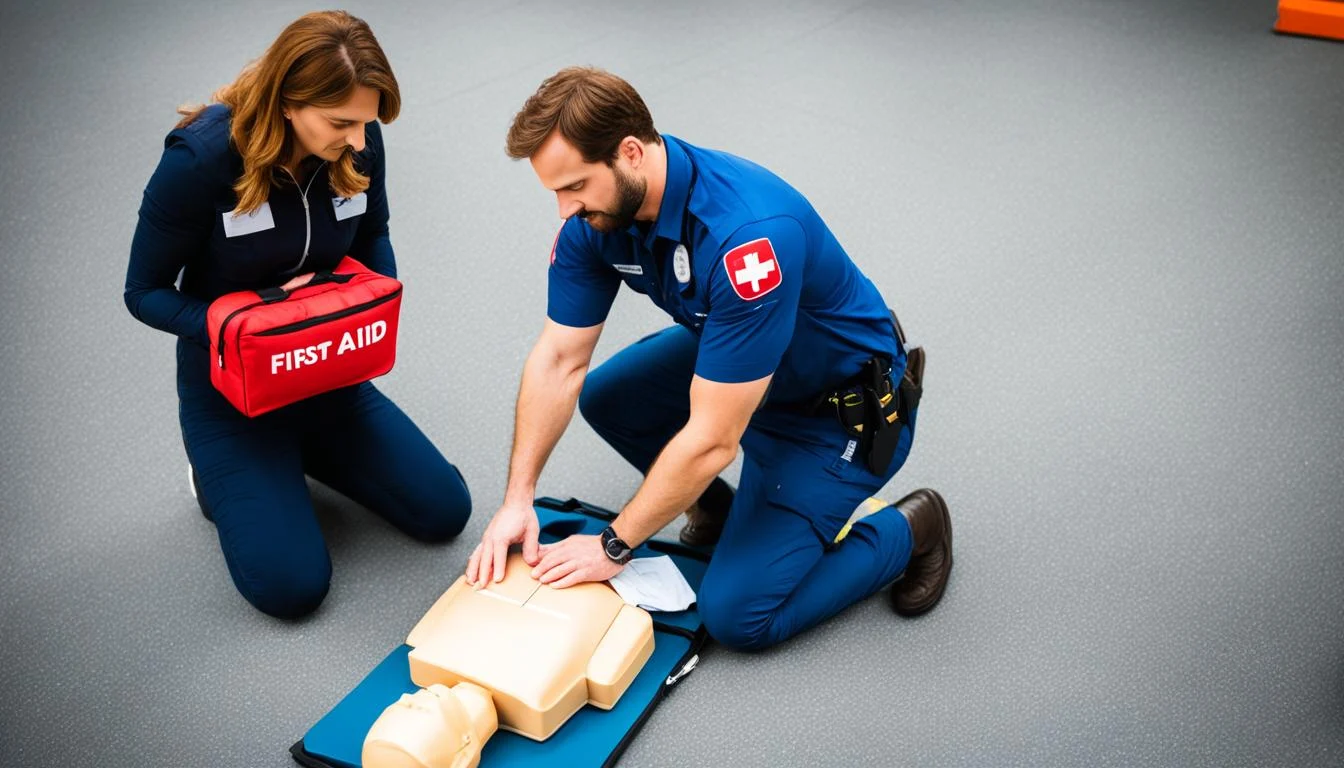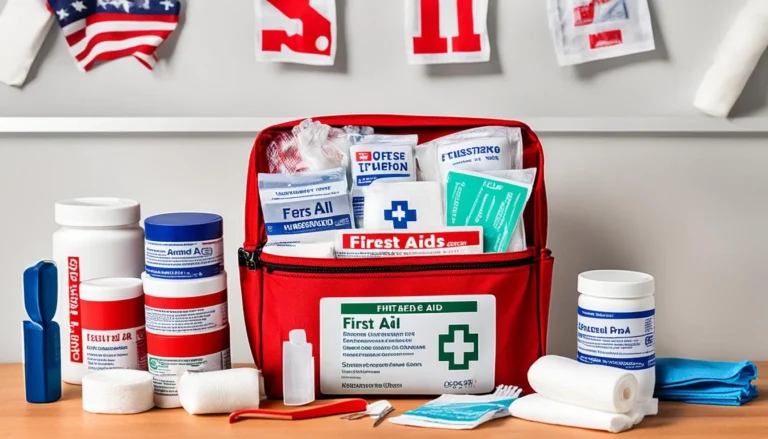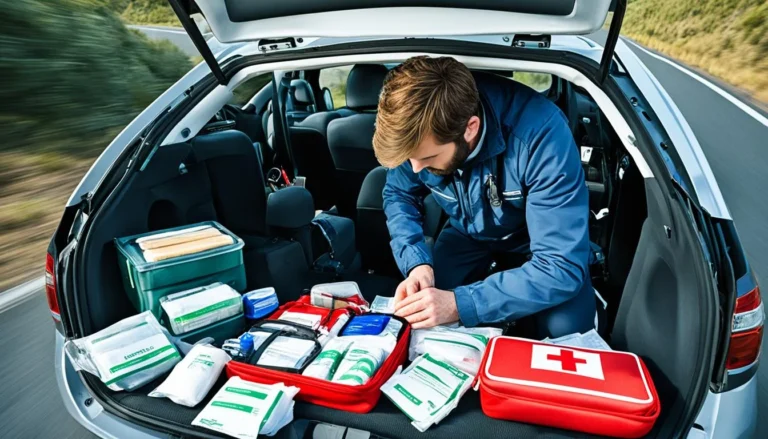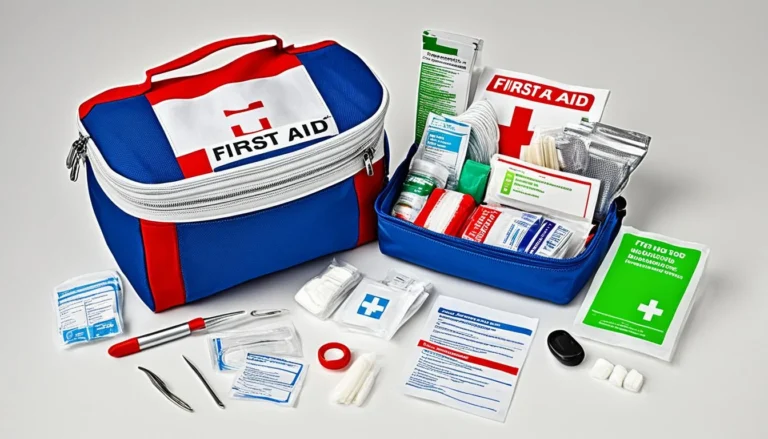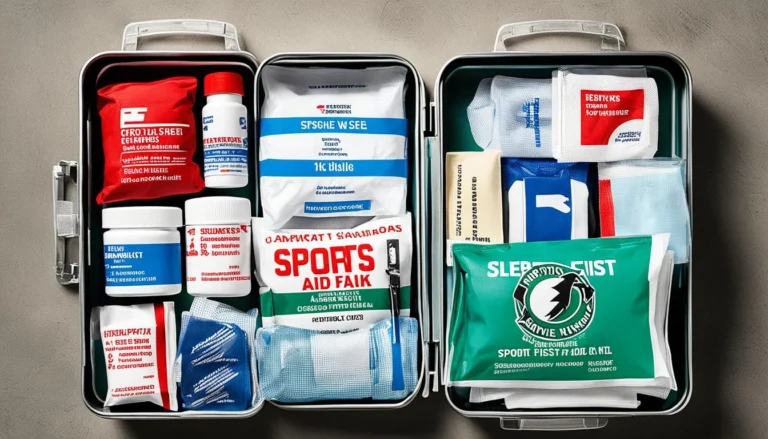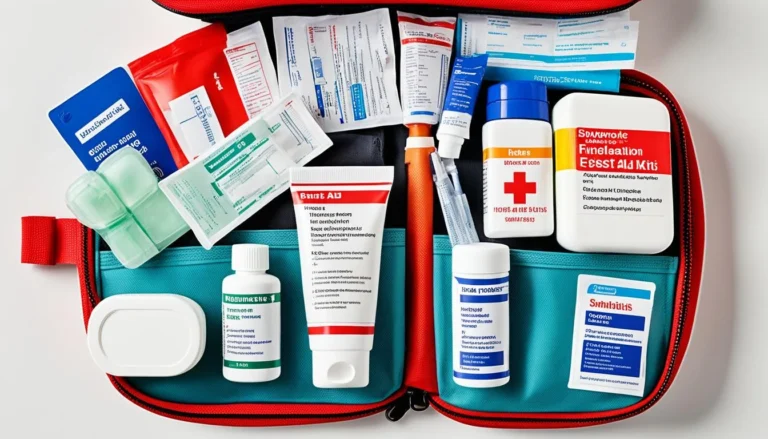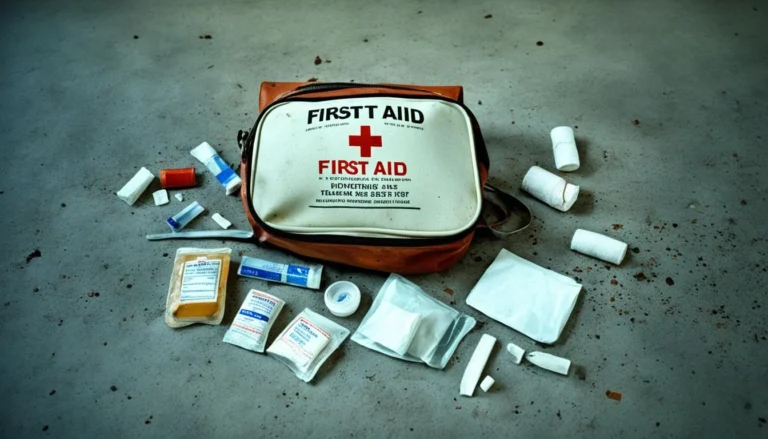Why Do We Need First Aid Training – Crucial Knowledge
First aid skills are essential for everyone to learn. They can help in emergencies, reducing recovery time. They may also prevent long-lasting problems. Knowing first aid helps people stay calm and act right when needed. This is key for making our surroundings safer.
Learning first aid boosts confidence. It helps individuals tackle tough situations before experts arrive. Courses like the Emergency First Response Secondary Care teach the necessary skills to respond in various emergencies. This prepares people well.
Key Takeaways
- Essential lifesaving skills can significantly impact emergency outcomes.
- First aid training fosters calmness and control in crisis situations.
- Increases readiness and confidence in handling emergencies.
- Promotes a heightened sense of safety and health awareness.
- Programs like Emergency First Response Secondary Care provide extensive training.
Introduction to First Aid Training
First aid is crucial. It’s the immediate care for the injured or ill until pros can step in. Its importance goes beyond emergency treatment.
It stands for knowing how to stabilize someone’s condition and keep them safe while help is on the way.
Definition of First Aid
First aid means the first help for the injured or suddenly ill. It aims to save lives, stop things getting worse, and aid in recovery. This care is key in daily life and emergencies alike.
History and Evolution of First Aid Training
The idea of first aid began with soldiers helping each other on battlefields. As medicine grew, so did first aid. It became a well-organised program for everyone.
Today, first aid training teaches basic medical steps. It prepares us for anything from small cuts to big emergencies.
First aid continues to grow, showing its lasting value in emergencies. Learning these basics is critical if you want to help your community stay safe.
It Can Save Lives
First aid is crucial; it can save a life when needed. Quick help is vital for issues like heart attacks or major injuries.
Statistics on Lives Saved with First Aid Training
Knowing first aid can make a big difference. But, only 5% in the UK have this training. Studies show that quick first aid can double the odds of surviving heart attacks or bad injuries.
So, spreading first aid skills is critical for better emergency help.
Examples of Life-Threatening Emergencies
Think of emergencies like strokes or bad bleeding. Fast first aid can keep things from getting worse before help comes. Only those trained can act quickly and wisely in these times.
Testimonies from Trained Individuals
Stories from trained folks show how important first aid training is. They tell of helping in critical times, which saves lives.
These tales not only show the value of being skilled but also encourage others to learn first aid.
It Increases Patient Comfort
First aid training boosts patient comfort. It shines when tackling less severe injuries or illnesses. Knowing how to give pain relief and emotional support is crucial. For example, correctly using ice packs, dressing wounds gently, and offering comforting words all help.
Sometimes, a professional’s help isn’t urgent. You can step in with non-medical assistance. This approach in patient care makes the situation less scary. It also reduces stress.
Learning simple first aid tactics allows you to help with pain relief and support. You’re making a big difference until more help arrives. This shows the big impact of first aid, even outside severe emergencies.
Why Do We Need First Aid Training
First aid training is key for everyone. However, many face barriers to joining in. By using smart plans and working together, we can beat these challenges.
Common Reasons People Avoid First Aid Training
People avoid first aid for quite a few reasons. Busy lives make them forget its importance. They think professionals will always help.
Also, not knowing where to learn makes it tough to sign up. Feeling too confident and believing accidents are unlikely are more reasons to avoid first aid training.
Importance of Overcoming These Obstacles
Solving misunderstandings and increasing class attendance matters a lot. This way, more people will know first aid. Overcoming these challenges means talking about the course’s real cost and difficulty. And, showing that help is available to those who need it makes a big difference.
Plus, making classes easier to attend attracts more folks. This improves our society’s safety, with more people ready to help in emergencies.
Prevents Situations from Worsening
First aid helps by reducing how bad an injury or illness gets. Doing the right first aid keeps things from getting worse. This stops complications and gives help when it’s needed.
Stabilising Patients Before Emergency Services Arrive
First aid aims to keep the patient steady until help arrives. It calms the person down and makes sure they’re safe. This can lead to a smoother recovery later on.
Utilising Basic Tools and Resources
First aiders can use simple items like a cloth for a bandage or something like a splint. They help while waiting for the ambulance. Knowing how to use these items is vital.
Collecting and Communicating Vital Information
Getting patient details and what happened is key. This info helps doctors give better and faster care. It keeps the help chain strong.
| Items | Use in First Aid |
|---|---|
| Clean Cloth | Bandage |
| Sturdy Material | Splint |
| Plastic Bag | Ice Pack |
Proper first aid stops issues from getting worse. It also lets professionals know what to do quickly. This info can make a big difference.
Boosts Confidence to Act in Emergencies
First aid training isn’t just about learning to help. It also gives people the mental strength to stay calm in a crisis. This ability to act confidently during emergencies is super important. This is because these moments are usually very stressful and confusing.
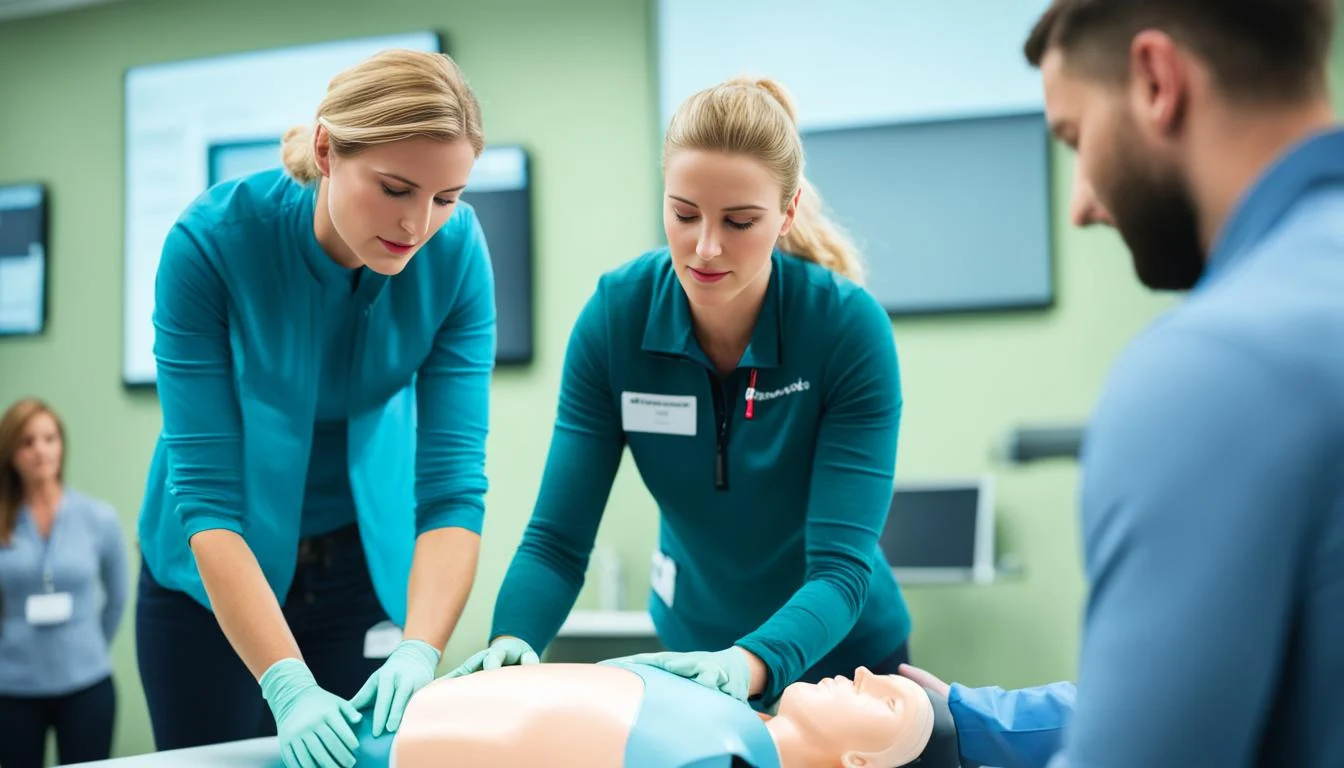
The Psychological Impact of First Aid Training
Learning first aid includes understanding emergency psychology. It’s about being able to help effectively while keeping a cool head. This calmness helps people be better at saving lives and managing tough situations until pros arrive.
Real-Life Examples of Confidence in Action
There are many stories showing how first aid training boosts emergency confidence. For example, being able to do CPR or handle heavy bleeding means you can help right away. Trained people often take the lead in helping others in tough spots. This shows not just their skills but also their ability to be steady under stress.
Encourages Healthy and Safe Living
First aid training goes further than just emergencies. It helps us build a safer and healthier way of living. This knowledge lets people act rightly and reduce risks every day.
Promoting Awareness of Health Hazards
First aid courses make us more alert to health hazards in our daily lives. Knowing more increases our health awareness. We take steps to prevent injuries both at home and work. Understanding dangers helps us make our spaces safer for everyone.
Impact on Daily Lifestyle Choices
Learning first aid majorly shapes our preventative lifestyle. It highlights good habits like regular workout and a healthy diet. This leads to better health overall.
Safety promotion means acting fast in accidents and growing habits that stop injuries and sickness.
- Diet and Nutrition: Encourages balanced eating to maintain optimal health.
- Exercise: Regular physical activity is promoted to enhance physical and mental health.
- Environment Safety: Focus on keeping living and working environments safe to prevent accidents.
Following these ideas helps us take care of ourselves and those around us. It makes us more aware of health and safety. This way, we create a place where preventing problems is key. We are paving a way for a better future.
Range of Available First Aid Courses
First aid training comes in many types for different situations. It’s important to know your options to get the best fit for you.
Different Types of First Aid Training Programmes
Many first aid courses are out there for different needs:
- Basic Life Support (BLS)
- Paediatric First Aid
- Mental Health First Aid
- Animal First Aid
Each course teaches skills for different emergencies. They give people the right tools to help others safely.
Online vs. In-Person Training Options
In first aid, you can choose between online and in-person classes. Both have good points:
| Aspect | Online Courses | In-Person Training |
|---|---|---|
| Flexibility | Highly flexible, accessible anytime | Fixed schedule, hands-on experience |
| Interaction | Virtual interactions, forums | Direct interaction with the trainer |
| Cost | Generally lower cost | Potentially higher, but includes practical tools |
| Accessibility | Accessible anywhere with internet | Location dependent, travel may be required |
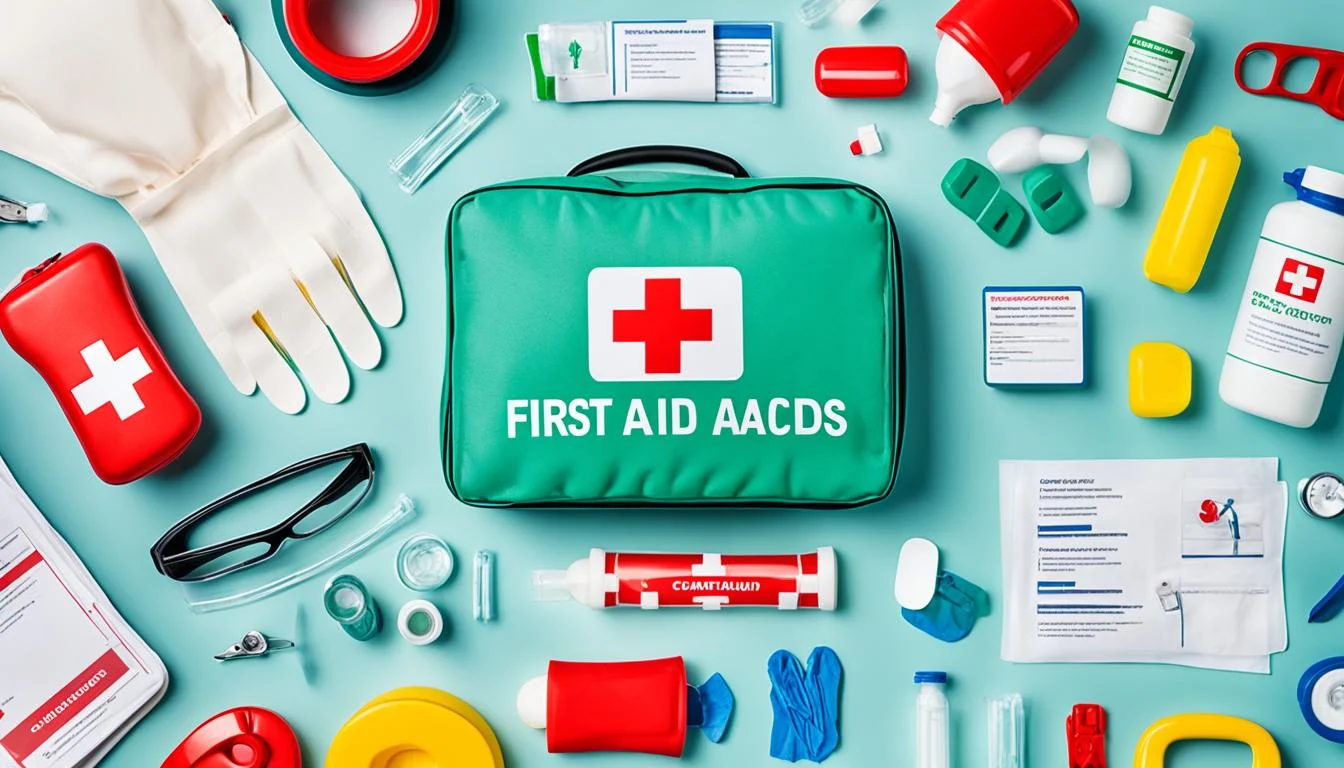
Finding the Right Course for You
Think about what you want, when you’re free, and what certificate you need for the right course. A course made just for you can boost your skills and confidence. It prepares you for any emergency.
Focusing on these points helps you pick the perfect course. This goes for both online and in-person training.
How to Get Started with First Aid Training
Starting your first aid journey is easy and fulfilling. Use tools like the EFR Course Finder to see all the available programmes. Just put in your location to find nearby training that suits your schedule.
Enrolling in a course is your first step. Look for a course that matches your time and interest. You’ll find many options – from evening and weekend classes to quick, one-day courses. Whether you learn best in a class or online, there is a perfect fit out there for you.
Once you’ve signed up, you’re on your way to learning crucial first aid skills. These courses mix theory with hands-on practice. This approach ensures you’re ready to help in real emergencies. Over time, you’ll become skilled at handling tough situations with confidence and ease.

